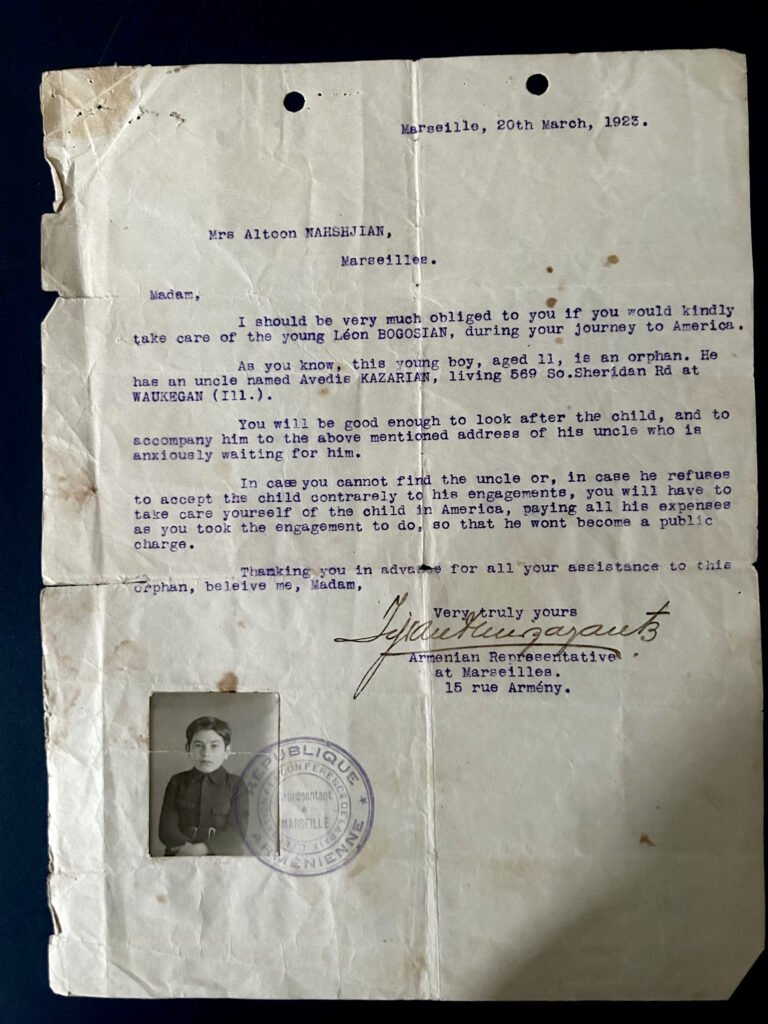
“I should be very much obliged to you if you would kindly take care of the young Léon Bogosian [Levon Boghosian], during your journey to America.”
So begins a letter found among the documents in the Armenian Revolutionary Federation (ARF) archives in Watertown and another story, both unique and universal, from the post-genocide experiences of Armenians. The reality contained in this and another letter to which it was attached moved me so greatly that I could not simply scan them and move on. I needed to learn more about Levon Boghosian and Altoun Nakshian, the woman who would be responsible for him on his “journey to America.”
While scanning the passport applications submitted to the representatives of the First Republic government in exile in Marseilles, application 1885 was in the form of a letter to US immigration authorities from Tigran S. Mirzayantz. The letter, dated 20 March 1923, explains that Levon was an 11-year-old orphan being sent to the US to join his uncle, Avedis Kazarian, in Waukegan, Wisconsin. The immigration officials were requested to assist Levon upon his arrival and were informed that he would be traveling with Altoun Nakshian.
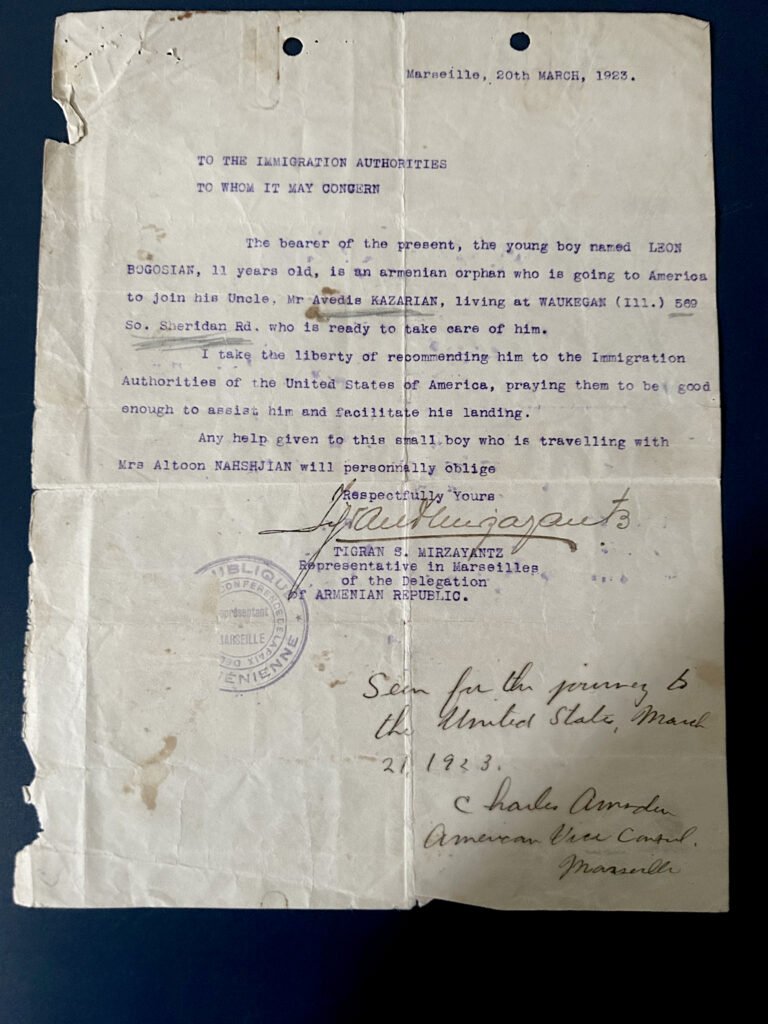
Then there is the second letter partly quoted at the beginning of this article. This letter is dated the same day and addressed to Altoun. But the letter asks more of Altoun than simply accompanying Levon. In case the uncle could not be found or was unwilling to take charge of his nephew, then Altoun was expected to care for Levon completely in the US such that he would not become a public charge.
Below this letter is the response from Altoun in Armenian and bearing her signature. She agreed to not only take Levon to his relatives in America, but should they refuse the boy, she agreed to care for him and take on all his expenses herself.
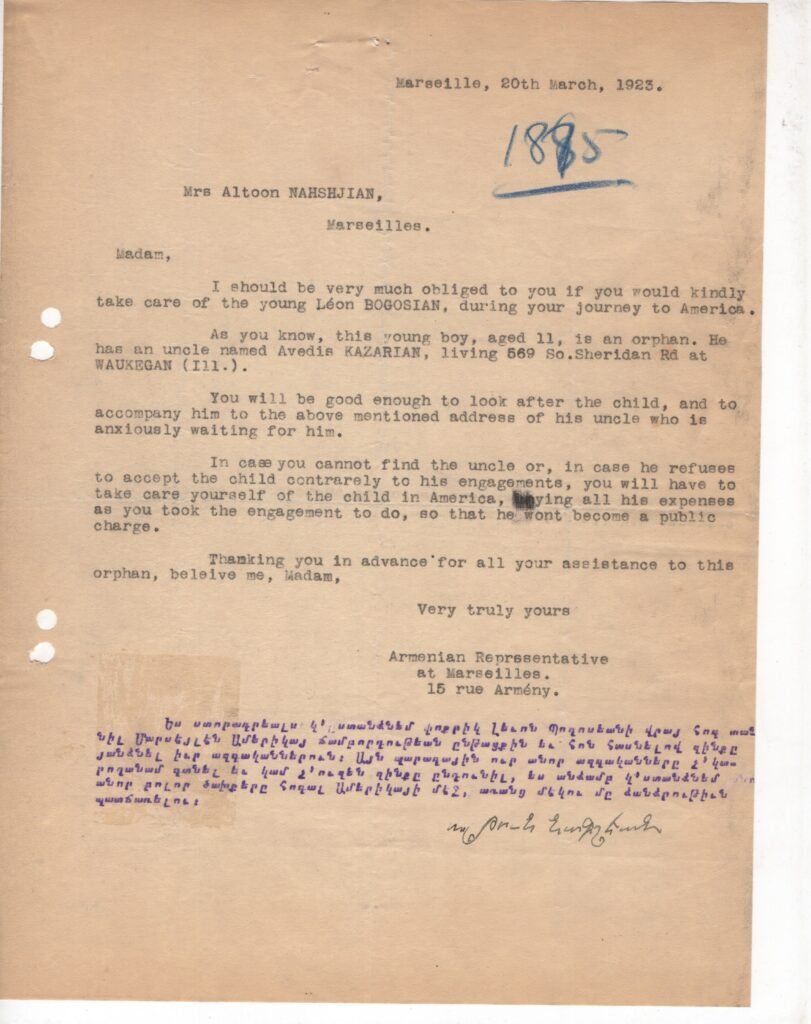
At first, the name Altoun Nakshian did not ring a bell with me. I found the ship manifest of Levon, Altoun and Altoun’s two daughters (Elmas, age 13 and Berjouhi, age 10) arriving in the US on April 7, 1923 on the SS George Washington. While the manifest indicated Levon was detained as he was under the age of 16, likely to become a public charge, and with the quotas having been exceeded, I did see that he was able to join his relatives in Wisconsin and in the 1930 census was living with them. During World War II, Levon joined the Navy and served on the U.S.S. Chiwawa and U.S.S. Soley. He married Lucy Karian, and they had three daughters. Levon died in 1983 in Fresno.
After having learned Levon’s fate, I became curious about Altoun and if the families had stayed in contact. I learned that one of Altoun’s daughters, Berjouhi, would after marriage be known by the name Bertha Ketchian, and that finally clicked. Bertha had written In the Shadow of the Fortress: The Genocide Remembered [1988, Zoryan Institute]. I checked my copy of the book, and there it was:
“In a few days our agent Joseph, or Hovsep, came to tell us that our papers were ready and we could be on our way to the United States. He asked a favor of Mother. There was an orphan boy who was to go to America to be reunited with his only living relative, a father or uncle…My mother agreed to take care of the boy. His name was Levon. He was orphaned during the Genocide and had later been placed in an orphanage. His father, or uncle, learned of his whereabouts and was now taking the boy to America. The three of us [Altoun, Elmas and Berjouhi] had gone through a tremendous ordeal, but what about this little boy of ten or eleven who had been all alone for so long? And he was not the only one – there were thousands of little ones left all alone through no fault of their own or of their families who had been killed. Levon was a bright boy who had already learned some French and English. He became a member of our family right away; we all grew very attached to Levon, and he to us.”
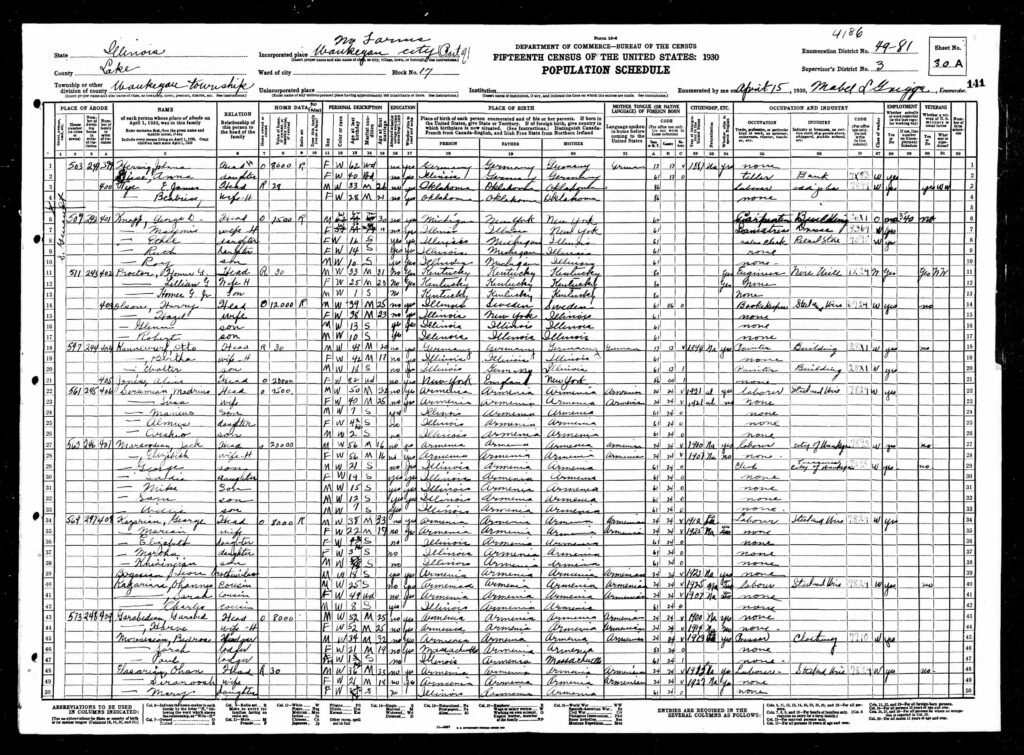
As Berjouhi would relate, when they arrived at Ellis Island, US immigration officials would not allow Levon to travel with the Nakshian family, but he instead had to wait until his own family came to retrieve him. And that was the last mention of Levon in the book. I have since spoken to the descendants of both Levon and Berjouhi, and they confirm the details. Berjouhi’s family confirmed that Altoun did know that Levon joined his family safely. Interestingly, Levon’s family retained their copies of the same two letters, though their copies did differ from those in the ARF archives. Specifically, the photo of Levon was affixed to a different letter, and theirs lacked the touching response from Altoun.
This is the story behind just one of the 20,000 passport applications now being digitized, transcribed and placed on the ARF archives website. Thus far, about 5,000 have been scanned. Of these, 1,200 have been transcribed through the volunteer effort of the Relais International de Généalogie Arménienne. These 1,200 have already been loaded to the website.
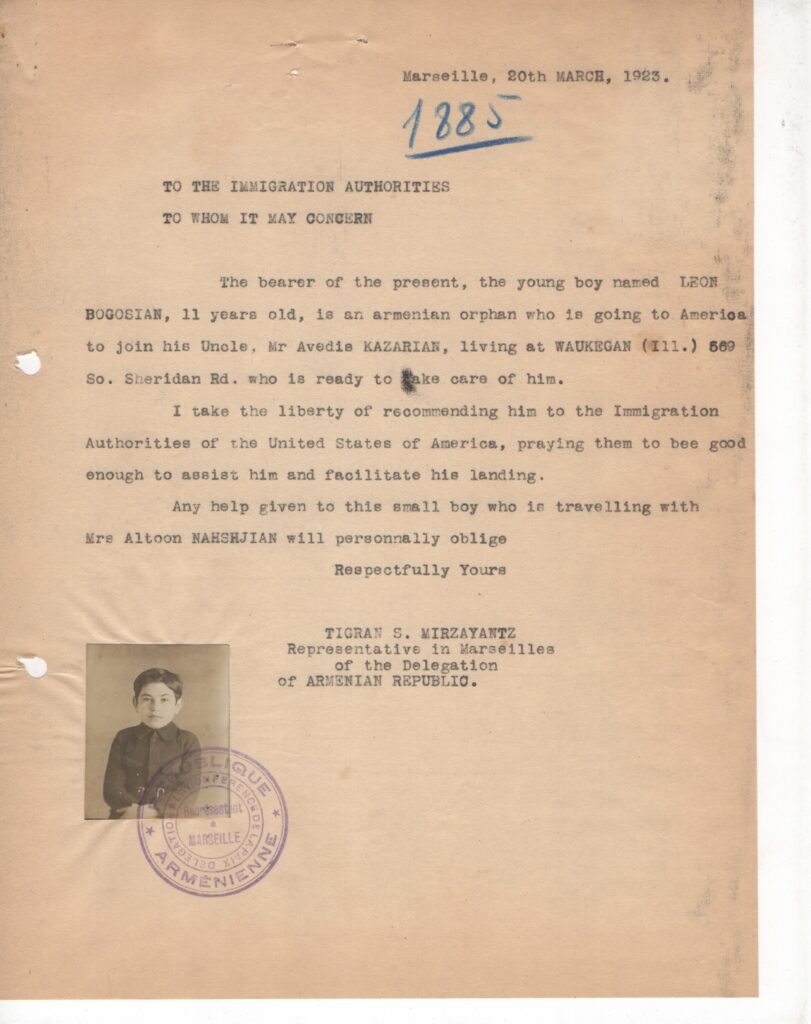
For those interested in supporting the ARF archives, tax-deductible donations can be made through the Armenian Cultural Association of America (ACAA).


Thanks George Aghjayan and ARF Archives to bring us these stories… It’s truly heart warming…
Always enjoy reading about George’s discoveries from our past!
Thank you George for all your hard work. I found my two uncles among the passport applications!
Thanks, George, for your efforts and work done! You are really reviving the hidden pages of our hard history.
thanks George